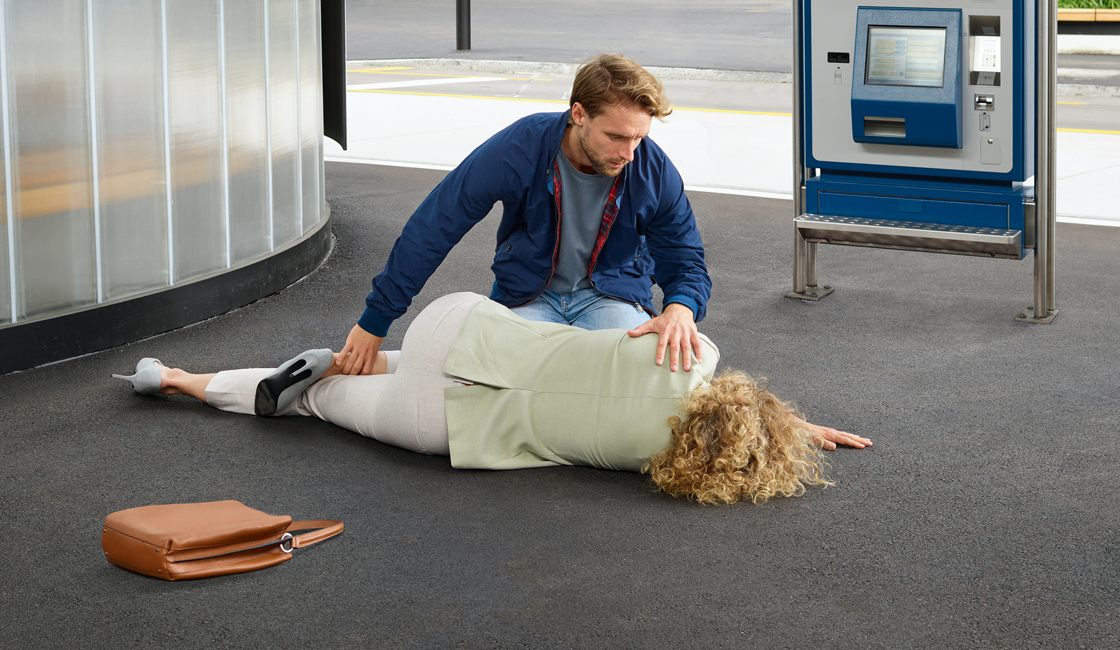The SRC used half of our donation to purchase face masks. These were particularly useful for carers and volunteers who care for high-risk and sick patients. The other half of our donation went to domestic support services related to coronavirus – helping the SRC to provide quick and easy support to people who found themselves in financial need due to the coronavirus crisis, by giving up to CHF 1,000 per month for essential expenses.
Helsana also supported the SRC’s resourcing: Helsana employees with a medical background worked in the Corona Test Centre in Bern. One of these Helsana employees was Corinne Winkelmann, who straight away volunteered for the new drive-in test centre. “It was immediately clear to me that I wanted to help,” she says. Corinne has been with Helsana since 2008. Before that, she had worked as a qualified nursing specialist. At the Corona Test Centre, she helped take samples and pack them securely for the laboratory. In September, we launched our First Aid campaign.
Read more about our partnership with the Swiss Red Cross here
To the Helsana websiteFirst Aid campaign
What should you do when someone suffers a medical emergency? A study commissioned by the Swiss Red Cross (SRC) and Helsana found that half of the population is uncertain about how to act in an emergency situation or about first aid measures. This is due to a lack of knowledge or knowledge that is out of date. Many respondents said their last first aid course was years, or even decades, ago or that they have never been on one.
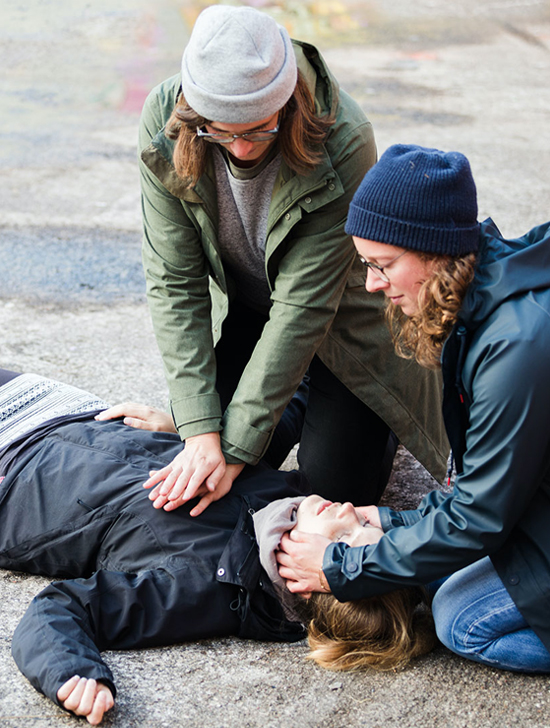
As a partner of the Swiss Red Cross, Helsana is committed to ensuring that as many people as possible can perform first aid.

Yet, swift action is vital in a medical emergency to ensure that the sick or injured person receives first aid until medical professionals can take over. First aid can prevent or reduce damage, and can even save lives.
Read more about the “What to do in an emergency” study by the SRC and Helsana here
To the Helsana websiteActing quickly is important
First aid courses teach people how to use a defibrillator correctly. These devices are everywhere, in public buildings and business premises as well as in railway stations or mountain stations. Yet, many people dare not use one in an emergency, despite it being very simple. All you have to do is open the case and there is a step-by-step guide to what to do. You cannot do any harm with a defibrillator. Quite the reverse, you can only save lives with it.
Learn more about using defibrillators.

Resuscitation with defibrillator (AED)
AED is an acronym for automated external defibrillator. It is a medical device to assist with the resuscitation of a person whose heart has stopped. It can’t harm them: the defibrillator analyses whether a shock is actually needed. A defibrillator can also be used to resuscitate children over eight years of age or from 25 kg.
1. Get the defibrillator
If several first aiders are nearby, after the emergency call, one person should get the defibrillator while the others perform chest compressions without stopping. Turn on the defibrillator and follow the instructions.
2. Expose the chest
Remove clothing from the chest to place the electrodes.
3. Stick on electrodes
Stick one on the right side of the person’s chest below the collarbone, the other on their left side below their armpit. Make sure someone continues performing chest compressions with short breaks while you place the electrodes.
4. Follow the instructions
The defibrillator will tell you what to do next with clear verbal instructions.
“Are you ready?”
Helsana and the SRC launched a wide first aid campaign across all communication channels in September 2020. The aim is to improve knowledge and give people the courage to help. So that each and every person can save a life in an emergency.
The campaign included communicating first aid topics via all communication channels. For example, the following quiz appeared on Helsana+.
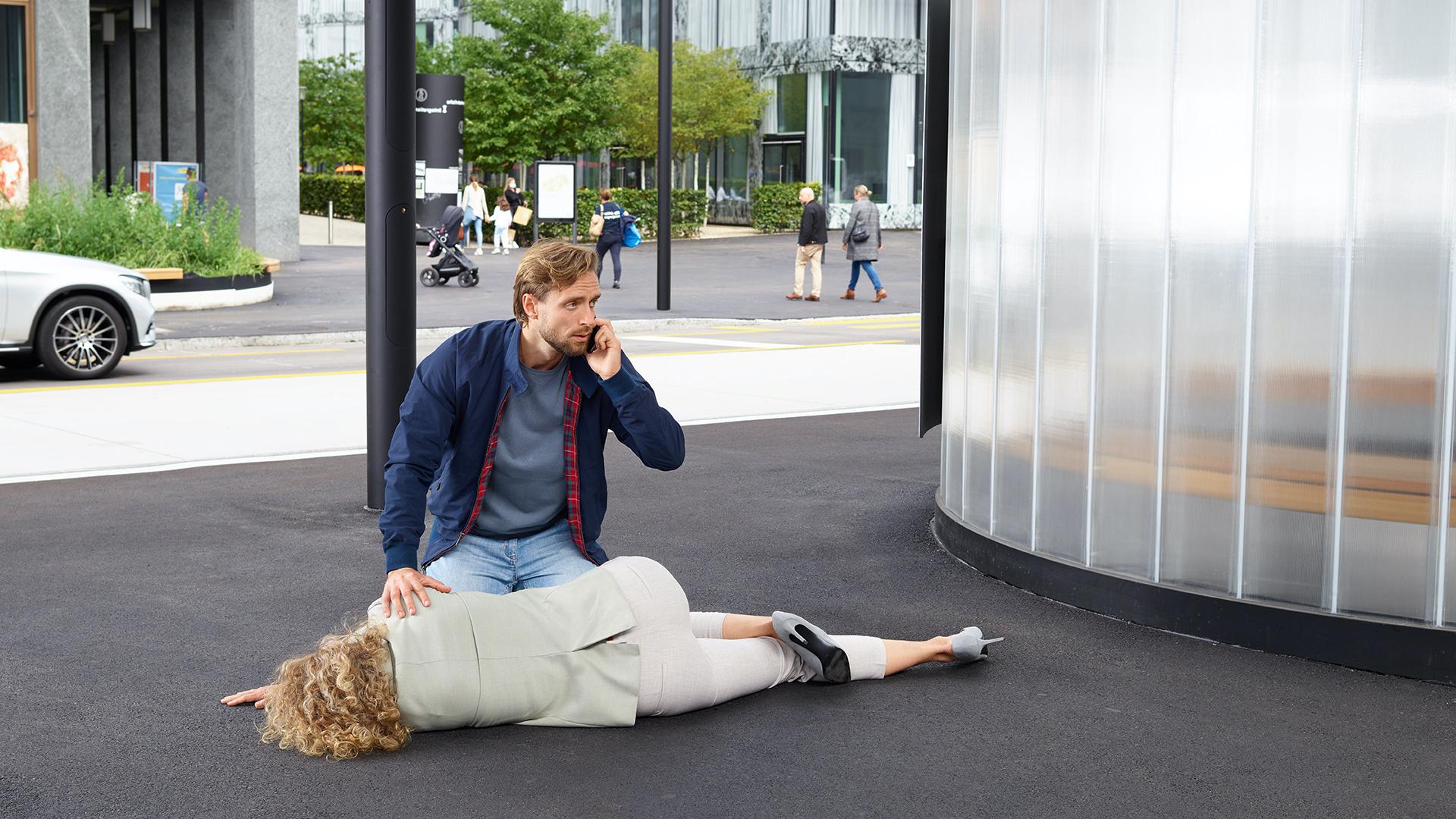
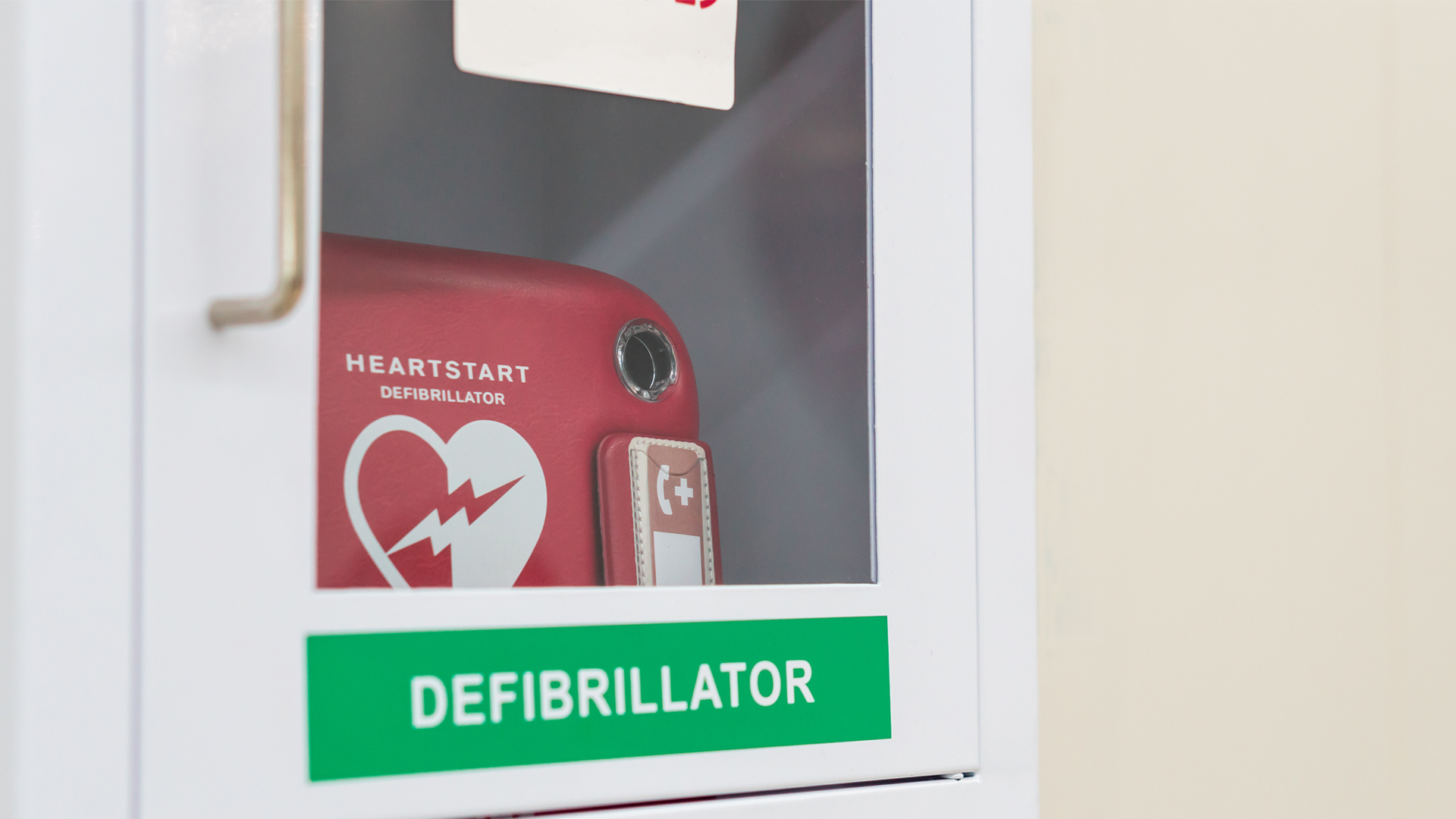
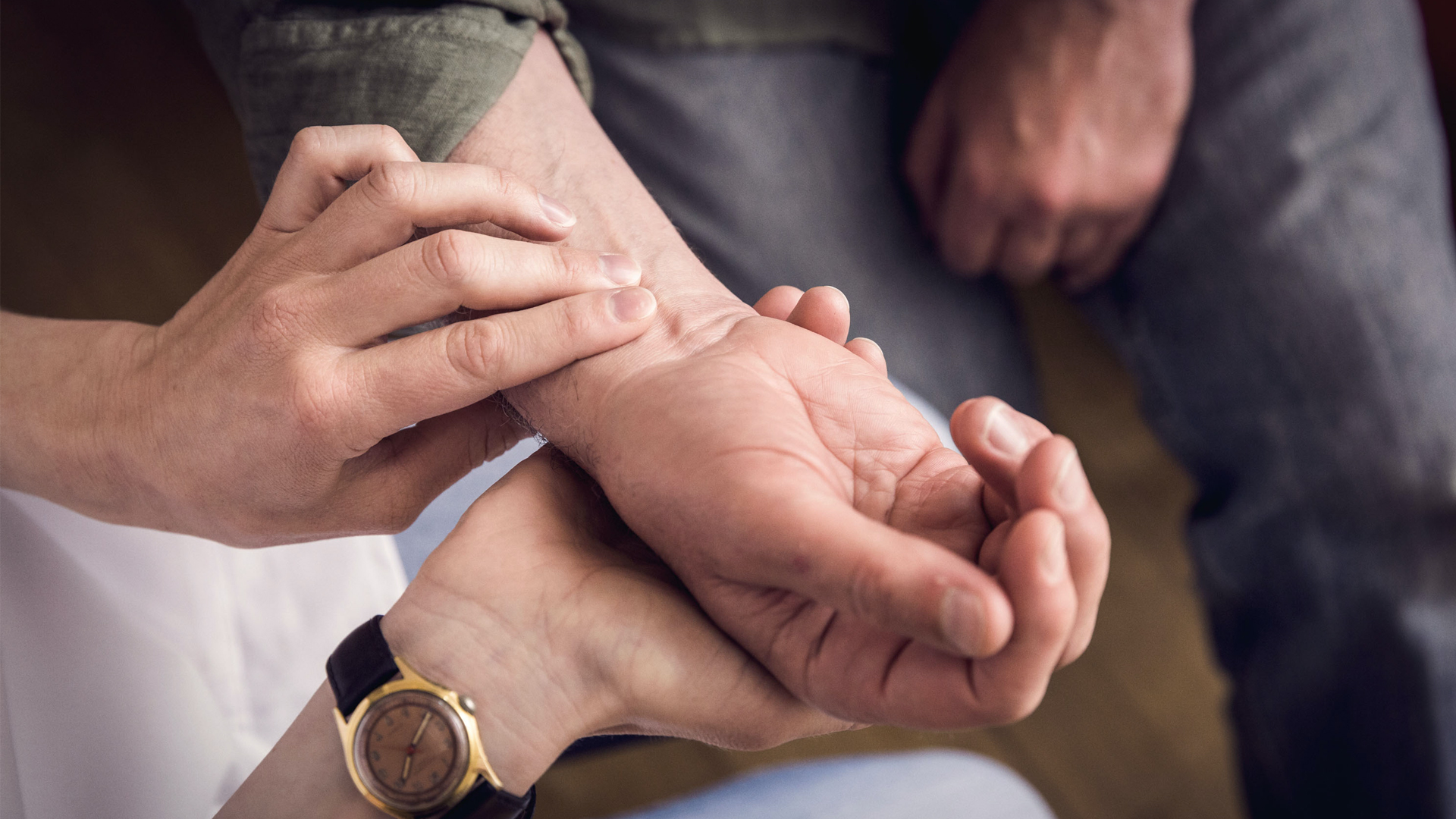
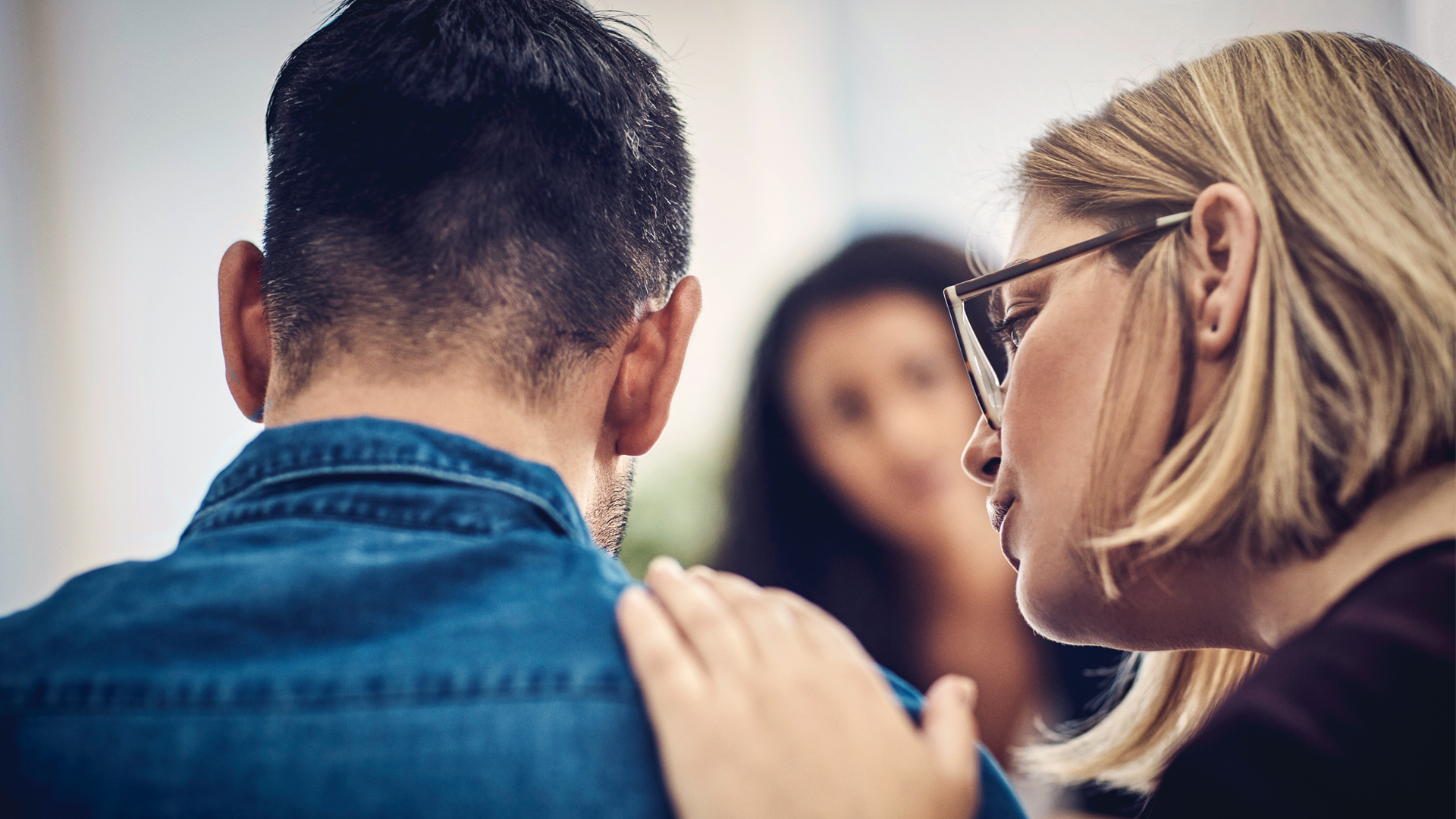
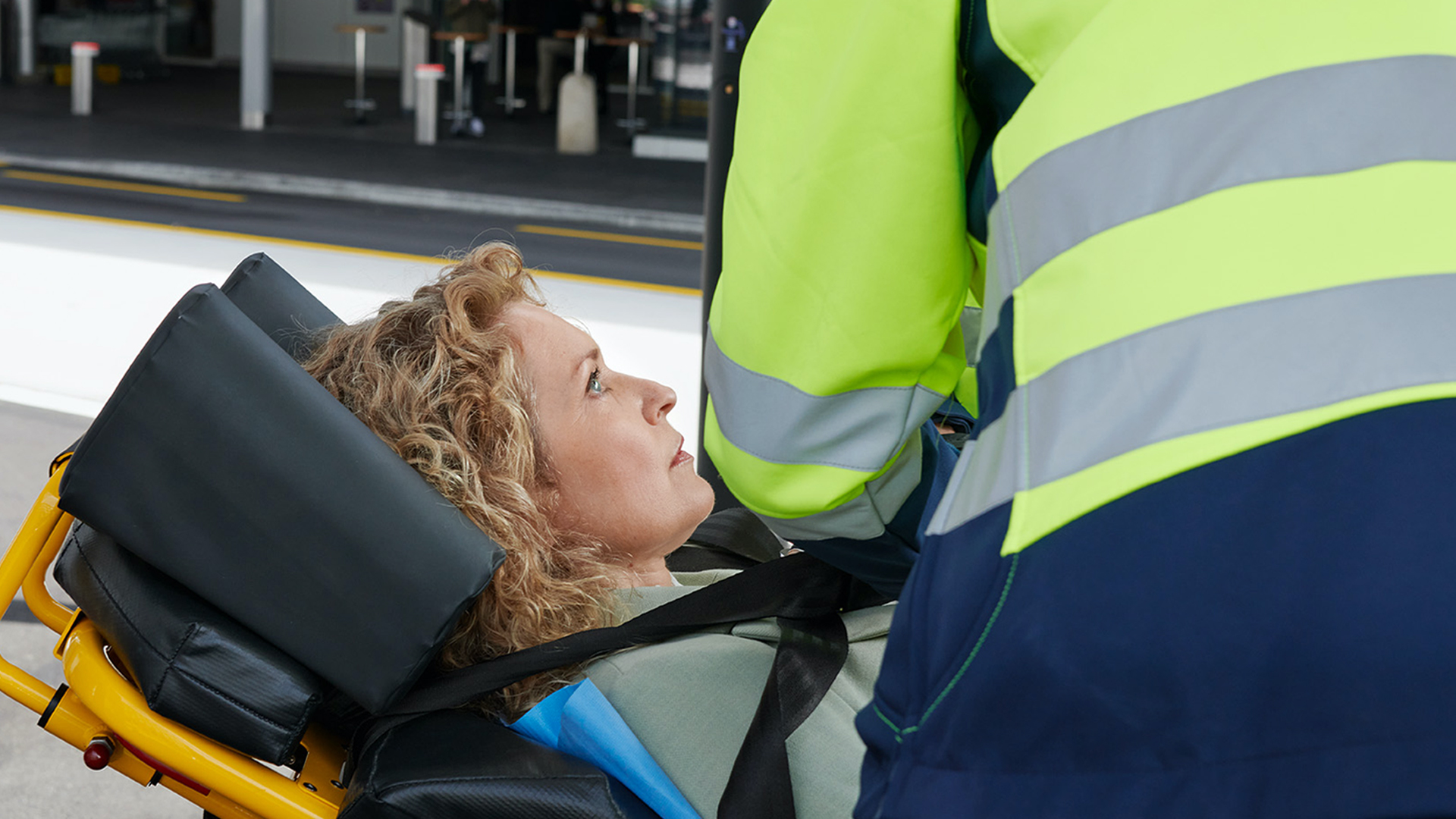
Take the test.
Would you have known the right answers?
A person is lying on the ground. They do not seem to be breathing and is unconscious. Which emergency number do you dial?
There is a defibrillator hanging on the wall in a cable car mountain station. Who is allowed to use this device?
How quickly do a cardiac arrest patient’s chances of survival decline if no help is given?
Which of these are not typical symptoms of a stroke?
When can a layperson be liable to prosecution in Switzerland?
Helsana helps out with the cost of first aid courses
For customers with Completa supplementary insurance, Helsana will pay 75%, or up to a maximum of CHF 200 per calendar year, towards the costs of selected courses run by the Swiss Samaritan Federation, one of the SRC’s rescue organisations.
To the Helsana websiteAlexandra Löwy fell from her horse while vaulting, leaving her with multiple fractured vertebrae. Thankfully, her vaulting team members responded correctly. The 23-year-old athlete tells her story.
For nurse Leonardo Bucci, acting quickly is part of the job. He demonstrated this when he was off duty, resuscitating a man in the tram.

